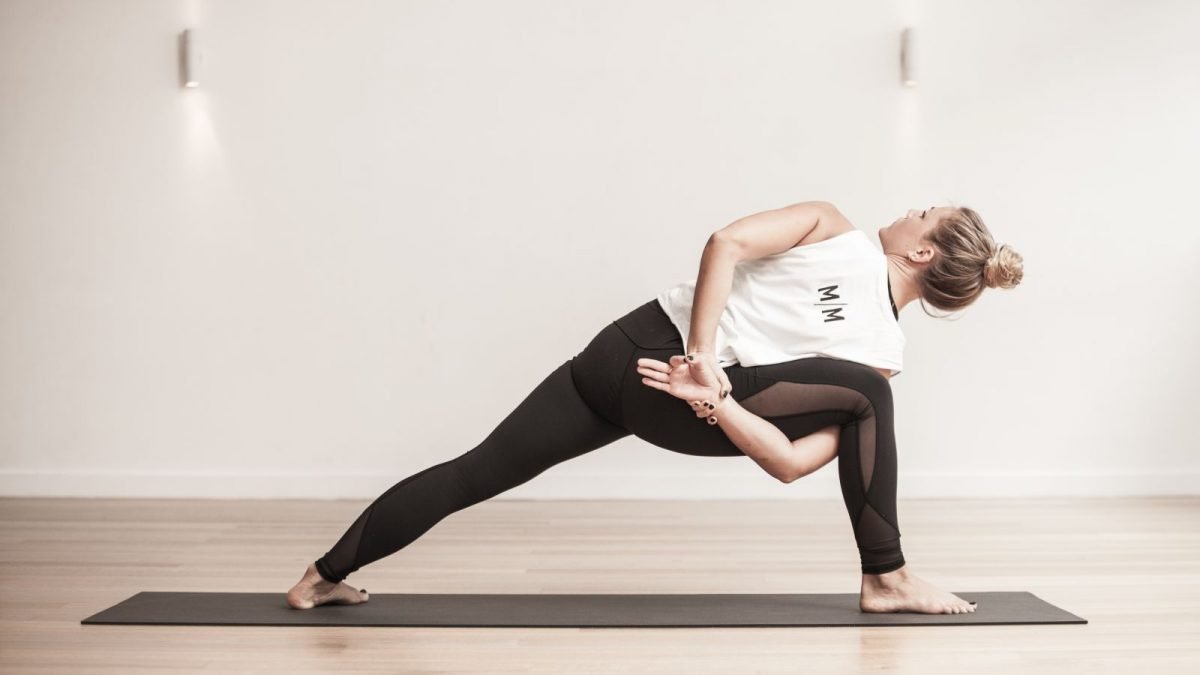Some yoga styles are more similar than others. Discussing Hatha vs. Vinyasa yoga requires looking at the terminology' development. Vinyasa is a type of Hatha, however Hatha has historically been the umbrella word. Yoga has a definition for Vinyasa classes.
Vinyasa classes include transition, flow, and movement coherence. Hatha means moving to breathe. Hatha and Vinyasa share postures and need more standing poses than other forms. Movement and breath are linked in their underlying structure.
Hatha has evolved to mean a powerful physical practice that emphasizes stillness, accuracy, and alignment, whereas Vinyasa emphasizes flow, rhythm, and breath.
What is Hatha yoga?

It is said in Light on Yoga that the Sanskrit term Hatha means "Sun & Moon," derived from the words Ha (sun) and Tha (moon), as described in the original text. Modern understandings of Hatha vary somewhat from its ancient counterparts. According to current wisdom, Hatha yoga is best understood as a subset of the larger discipline that emphasizes alignment, stability, grounding, flexibility, strength, and accuracy in its practitioners. For those new to yoga, Hatha yoga is a good starting point since the postures are simpler and more easily learned.
Some traits of Hatha yoga include:
- Holding postures for a few breaths at a time
- Putting focus on individual postures rather than the sequence and linking between postures
- Practicing at a slower pace
- Having the time and space to truly focus on the correct alignment of each pose
Benefits of Hatha yoga:
- Strength
- Balance
- Flexibility
What is Vinyasa yoga?
Vinyasa Krama is defined as follows by Desikachar, who is the son of Krishnamacharya, in his book "Health, Healing, and Beyond":
Vinyasa is the principle that dictates how you do an asana and the overall flow of your practice. It denotes a sequential, beginning-middle-and-ending process. During the asana, one focuses on the smoothness and flow of inhalation, expiration, and retention as they advance toward the designated finish line. The next step is an evolution of the previous one. Similarly, a series of asanas works similarly. There is a natural development from the first position to the last, with each one serving as a stepping stone on the way to the program's peak.
Some traits of Vinyasa yoga include:
- Dynamic body movements
- Focused on physical fitness
- Incorporates hopping and jumping
- Uses sun salutations as a driving force between the structure
- Focuses on transitions between postures
- Links each posture to an inhale or exhale
Benefits of Vinyasa yoga:
- This is a great cardiovascular workout since it requires you to move quickly, which raises your heart rate.
- All that exertion puts strain on the lungs, which may be improved by focusing on breath.
- Allows for the development of muscle
- Essential capabilities
- Power in the upper torso
- Flexibility
- Safely build muscle length
- Better portability
- Workout for the whole body
Hatha vs Vinyasa yoga: Which one is best for you?
Ultimately, there are many similarities between every type of yoga. There are even aspects of yoga that bleed into other spiritual and physical practices. It’s important to remember a couple of things when determining which practice is best for you:
- What am I looking to gain from this practice (spiritually, emotionally, physically)?
- How am I feeling as I navigate these different practices?
- Are there particular areas I need to work on that a specific practice can help me with?
- What is most aligned with the practice that I typically wish to practice or do I wish to switch it up and try something new?
Vinyasa yoga is good for…
- Those seeking a more athletic practice will find more hopping and leaping, as well as a quicker tempo.
- Those eager to sweat: Vinyasa incorporates cardio with rapid movement between poses.
- Those seeking energetic, expressive movement may like Vinyasa yoga, which is similar to dance in many respects. The movement between postures is more dynamic, expressive, and fluid.
- Those seeking more inventiveness and fun in the sequences.
Hatha yoga is good for…
- Those who want a more grounding practice that feels strong and stable.
- Those who are looking for a more slow paced practice (not to be confused with gentle yoga). In Hatha yoga you can still expect to practice advanced poses depending on the level of class you take.
- Those who want to master particular poses and increase their stamina in standing poses.
To learn more about Hatha and Vinyasa yoga, visit the Yoga Renew YouTube Channel or sign up for our online yoga teacher training classes. Our classes and YouTube videos will teach you a full description of the Hatha and Vinyasa styles of yoga, as well as how alignment is essential in both.

